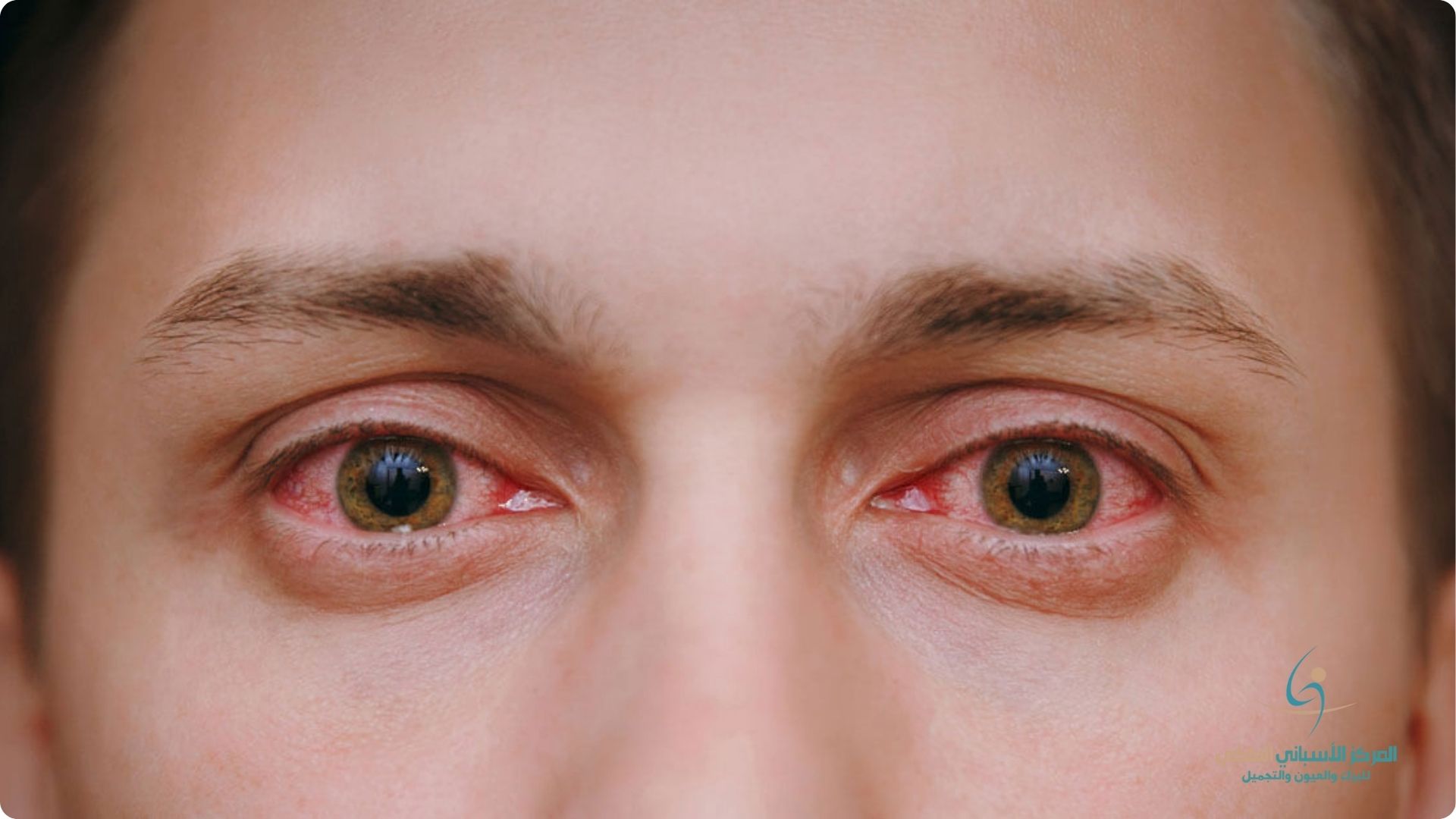Eye redness, also known as red eye, is a medical condition that describes the appearance of red color and irritation in the white part of the eye or clearly visible red veins in it. This condition results from dilation or inflammation of the small capillaries inside the eye. Eye redness can affect one or both eyes, and may appear gradually or occur suddenly.
Causes of red eye include:
– Allergies.
– Conjunctivitis, known as pink eye.
– Inflammation of the eyelid.
– Hay fever, or allergic rhinitis.
– Chalazion, which is an inflammation and blockage of a gland in the eyelid.
– Side effects of eye surgeries or the use of contact lenses.
– Wounds or ulcers in the cornea.
– Viral infection of the cornea.
– Dry eyes due to lack of tear production.
– Side effects of eye drops.
– Solid objects entering the eye.
– Glaucoma, which causes damage to the optic nerve.
– Direct injuries to the eye due to trauma or burns.
– Uveitis, which is inflammation of the colored part of the eye.
– Keratitis.
– Scleritis, i.e. inflammation of the white part of the eye.
– Orbital cellulitis, which affects the skin around the eyes.
– Subconjunctival hemorrhage.
Symptoms associated with red eye include:
– Irritation in the eyes.
– A burning sensation inside the eyes.
– Itch.
– Dry eyes.
– My eye pain.
– Unusual discharge from the eye.
– Increased eye tears.
– Excessive sensitivity to light.
– Blurred vision.
Treatment for red eye varies depending on its causes and severity. For mild cases, simple measures can be followed to relieve symptoms:
– Use cold water compresses to reduce redness and swelling.
– Take over-the-counter antihistamines and decongestants to relieve redness.
– Use pain relievers such as ibuprofen or paracetamol to reduce discomfort and swelling.
– Use lubricating eye drops (artificial tears) to relieve redness and irritation.
– Avoid environmental irritants such as smoke and pollen.
– Keep hands clean and avoid touching eyes.
– Stay away from cosmetics and contact lenses until symptoms disappear.
– Reduce the use of electronic screens.
If symptoms do not improve, you should visit the Royal Spanish Center to determine the appropriate treatment, which may include:
– Drops or pills containing steroids.
– Antimicrobial medications, whether oral pills, topical medications, or eye drops.
– Eye drops prescribed to treat problems such as glaucoma, dry eyes, or allergies.
– Surgical procedures such as laser to treat certain conditions such as closed-angle glaucoma.
Does red eye have any complications?
Although red eye rarely leads to serious complications and may not require medical intervention in many cases, neglecting it may increase the risk of more serious health problems, including vision loss. It is recommended to visit a doctor immediately in certain cases, such as:
– Redness persists for more than two days.
– The presence of abnormal secretions from the eye.
– Feeling pain in the eye.
To prevent red eye, several steps can be taken, including:
– Wash hands regularly and well, especially when dealing with people with eye infections.
– Wash your eyes thoroughly before going to sleep and remove any cosmetics.
– Wear contact lenses correctly, avoid using them for more than the specified time, and do not wear them while swimming or throughout the night.
– Make sure to clean contact lenses regularly.
– Avoid activities that cause eye strain.
– Stay away from substances that may irritate the eyes, and wash the eyes with lukewarm water if exposed to them to remove any impurities.

